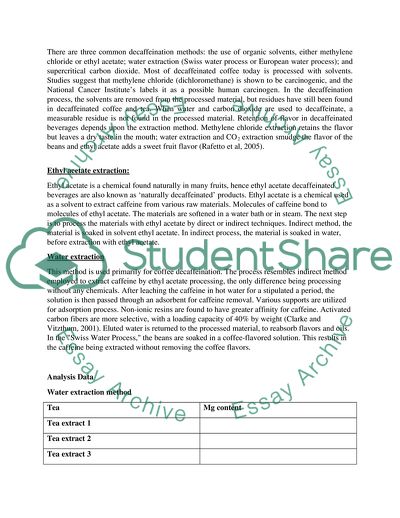Cite this document
(Levels of Caffeine in Tea, Coffee and Soft Drinks Lab Report, n.d.)
Levels of Caffeine in Tea, Coffee and Soft Drinks Lab Report. https://studentshare.org/chemistry/1719800-comparison-of-levels-of-caffeine-in-tea-coffee-and-soft-drinks-by-using-different-methods
Levels of Caffeine in Tea, Coffee and Soft Drinks Lab Report. https://studentshare.org/chemistry/1719800-comparison-of-levels-of-caffeine-in-tea-coffee-and-soft-drinks-by-using-different-methods
(Levels of Caffeine in Tea, Coffee and Soft Drinks Lab Report)
Levels of Caffeine in Tea, Coffee and Soft Drinks Lab Report. https://studentshare.org/chemistry/1719800-comparison-of-levels-of-caffeine-in-tea-coffee-and-soft-drinks-by-using-different-methods.
Levels of Caffeine in Tea, Coffee and Soft Drinks Lab Report. https://studentshare.org/chemistry/1719800-comparison-of-levels-of-caffeine-in-tea-coffee-and-soft-drinks-by-using-different-methods.
“Levels of Caffeine in Tea, Coffee and Soft Drinks Lab Report”. https://studentshare.org/chemistry/1719800-comparison-of-levels-of-caffeine-in-tea-coffee-and-soft-drinks-by-using-different-methods.


